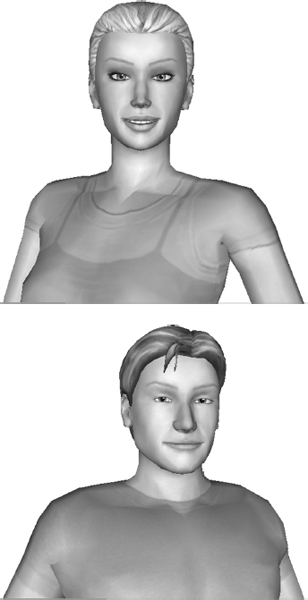14.12 THE UNIVERSAL CLIENT AND WEB 2.0
On the Web, the web browser is the universal client that makes the web so successful. A plethora of services can be delivered through this one client. It would seem that the ‘buddy browser’ is a key client for IMS-related services, not just person-to-person, but, as we have just seen, presentity-to-presentity, which is a more general class of communications possibilities. Presentities can be human, automaton or avatar (i.e. an automaton pretending to be human).

Figure 14.16 Avatars for mobile avatar-chat applications. (Reproduced by permission of GoFigure Mobile.)
It is an increasingly common view that the presentity-based connectedness paradigm is a key enabler for next generation services. These could range from simple telephony, if we can still call it simple, to sophisticated multimodal communications, moving more towards the realm of mobile computing and away from mobile telephony, although always with the telephony potential lying somewhere underneath; after all, it will always be possible in the IMS world to make a call. However, more generally, calling is just another mode of connecting in the IMS world.
The universal client possibility leads easily and naturally to multimodal services. Besides the huge potential in the services domain, a universal client would seem to give IMS-based FMC solutions a distinct advantage over alternatives, ...
Get Next Generation Wireless Applications: Creating Mobile Applications in a Web 2.0 and Mobile 2.0 World, 2nd Edition now with the O’Reilly learning platform.
O’Reilly members experience books, live events, courses curated by job role, and more from O’Reilly and nearly 200 top publishers.

